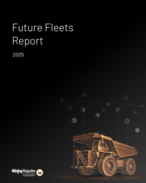Published in June 2006 Australian Longwall Magazine
Where the need for the contractor is driven by lack of capital or specialised service needs then the decision is generally easy, but when such consideration is given to the use of service contractors, the focus is often upon the individual unit costs associated with the service or function provided in ignorance of the global (site) impacts/benefits of the full suite of contracted activities onsite, according to UGM Engineers managing director Paul Hartcher.
“When the vagaries of mining become glaringly obvious and suddenly impact upon the ability to obtain a return on capital, the lost revenues and ever extant fixed costs suddenly override policy guidelines and budget constraints,” he said.
“Fix it now, we’ll worry about the detail later becomes the norm.”
Hartcher says in such an environment, the focus is on the solution – not the cost – and the ability to secure the resources on relatively short notice is of paramount importance.
“Yet such resources do not wait idly by in the car park awaiting summons in the mine’s hour of need and in this current environment of skills/labour shortages, delays in obtaining sufficient resources can be critical and extremely costly.”
Traditionally, service tenders focused on the project at hand, not the dovetailing of mine needs with the full capability of the contractor.
Hartcher said these days in cases where the tendering process leads to different contractors for different services, often the management of those contractors onsite takes key people out of their intended role in their organisation. This, Hartcher argues, is reason enough to employ one contractor who can supply a full range or services, rather than several contractors on the same project.
“A greater number of contractors may result in apparent lower unit costs for a service, but an assessment of lost management time in coordinating functions, ensuring continuity and access, defining and clarifying terminal points, reviewing cross contract disputes, ongoing performance assessment and review, assessing delay claims and extension of time, integration between the mine plan and contract schedules and processing of progress claims shows a significant management cost and operational efficiency factor,” he said.
He said therefore any assessment of the role of a contracting company onsite needs to address the multiple service ability of that organisation and the management support available externally to the site personnel, especially in times of crisis.
Such an assessment requires the minesite to expand its focus away from singular budgetary issues and determine cross-departmental requirements and means for the establishment of priorities and communication to the single contractor providing the resources (labour, equipment and management) to undertake a broader range of tasks.
Hartcher said that before going to tender, mines need to fully comprehend the cost impacts of risk transfer and associated forms and content of contract, lump sum or schedule of rates, liquidated damages, retentions, defect liability periods, security deposits and performance guarantees, insurance requirements and associated costs, consequential losses provisions, removal of escalation clauses, termination for convenience provisions for the principal and acceptance of all geotechnical risk by the contractor.
“Risk transfer results in risk costing. Put simply, the greater the risk, the greater the cost. Standard forms of contract blindly attached to a workscope can be incredibly onerous and unrealistic when balanced against the nature and value of the work being offered,” Hartcher said.
“With onerous, multiple contracts, the ongoing management time for site personnel will only increase in what is essentially a system designed for confrontation given that the only defence a contractor has is to ensure a detailed paper trail exists.”
“No extraneous [to the contract] activity takes place without written site instructions, which can lead to delays in critical tasks.
“Contractor analysis for delay claims, time extensions and variations leads to corresponding time from the principal’s management. Any difference of opinion in the paper battle may result in a dispute claim and further lost management time.”
Hartcher said “nobody writes the perfect contract”. If the relationship works then the contract wording wasn’t important but conversely, if the contract wording was constantly needed then the relationship and respective organisational energies were no longer driving the original common operational goals.
He said mines needed to develop mechanisms to measure and value contractor performance. “Such assessment needs to consider the management resources required by the mine to manage the contractor and the range of services offered versus the specific skills of the contractor and functional need of the mine.”
Basic issues for the contractor include a clear definition of the work; that the principal’s superintendent is part of the operational team at the mine; that the team managing the project for the client understands the tenets of the contract and the ongoing obligations and commercial impacts; that it is a level playing field; that the tenure of the contract offers security for employees; and that autonomy is available to allow self-control over internal personnel and resources.
UGM offers a “one-stop contracting shop” to the coal industry and its range of services include coal cutting, secondary bolting, conveyor maintenance, conveyor install/retraction, ventilation installation including concrete bulkhead seals, road maintenance crews, concrete construction crews and supplementary labour for preferred clients.
“Our preferred status with a client is one of being part of the furniture, sending experienced mine management personnel to attend weekly planning meetings at a range of sites so we see the full picture across various resource strapped mines and enabling us to dovetail our resources into the actual physical activities as they occur,” Hartcher said.
UGM has grown in less than a decade from a conveyor contractor to a company with the largest client base of any underground coal contracting firm in Australia.























